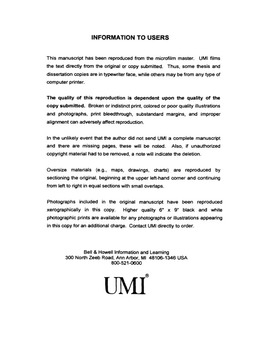| dc.contributor.advisor | Harwell, Jeffrey H., | en_US |
| dc.contributor.author | Wesson, Laura Lei. | en_US |
| dc.date.accessioned | 2013-08-16T12:18:07Z | |
| dc.date.available | 2013-08-16T12:18:07Z | |
| dc.date.issued | 2001 | en_US |
| dc.identifier.uri | https://hdl.handle.net/11244/279 | |
| dc.description.abstract | An overview of surfactant adsorption included a discussion of the importance of surfactant adsorption in petroleum applications, a summary of the history of surfactant adsorption research and the mechanisms that have been proposed to explain observed adsorption behavior, and a review of several surfactant adsorption studies. Concluding with the results of the adsorption behavior of the alkyldiphenyl oxide disulfonate surfactants onto a variety of solid surface including sandstones, river alluvium and alumina. | en_US |
| dc.description.abstract | Several properties and behaviors of the anionic surfactants alkyldiphenyl oxide disulfonates were investigated. The critical micelle concentrations (CMC) were determined for the monoalkyl C10, C12, and C16; and for the dialkyl C10. The CMC values ranged from 10-5 to 10-3 M in no additional electrolyte and from 10-6 to 10-5M in 0.15M sodium chloride for the monoalkyl surfactants and 0.09M for the dialkyl surfactant. These surfactants are known to be isomeric mixtures, and the observed trends were explained in terms of the compositions of these mixtures. | en_US |
| dc.description.abstract | Microemulsions were formulated in an attempt to produce Winsor Type I-III-II and I-IV-II transitions. In formulations containing alkanes and chlorinated hydrocarbons only I-III transitions were possible even when saturated with sodium chloride. In systems containing octanoic acid, which was added to act as a lipophilic linker, the I-III-II and the I-IV-I transitions were achieved with tetrachloroethylene using calcium chloride. Gels were present in many of the systems and could not be eliminated by increased temperatures. Optimum solubilization potentials averaged 2.93 mL/g at 24° C and decreased to 2.75 mL/g at 45° C. | en_US |
| dc.description.abstract | Adsolubilization studies involving 2-naphthol were conducted to determine the affect of surface coverage on the adsolubilization of the naphthol. The surfactants used were the monoalkyl C10, C12, and C16, and the dialkyl C10 surfactants at two different initial concentrations that produced adsorbed concentrations that were below complete bilayer coverage. Solubilization studies were also conducted. The C16 admicelles and micelles had similar solubilizing capabilities based on the similarities between the partition coefficients for the adsolubilization and solubilization. The partition coefficients of the C12 for the solubilization were much lower than those for adsolubilization. It was proposed that the C12 admicelles were capable of edge-site adsorption which would explain the increased solubilization of the naphthol relative to the C16. The edge-sites were explained in terms of the structural differences between the C12 and C16 molecules. The results for the monoalkyl and dialkyl C10's were inconclusive. | en_US |
| dc.format.extent | ix, 231 leaves : | en_US |
| dc.subject | Surface active agents. | en_US |
| dc.subject | Micelles. | en_US |
| dc.subject | Adsorption. | en_US |
| dc.subject | Carbonates. | en_US |
| dc.subject | Engineering, Chemical. | en_US |
| dc.title | An investigation into the properties and behaviors of alkyldiphenyl oxide disulfonate surfactants. | en_US |
| dc.type | Thesis | en_US |
| dc.thesis.degree | Ph.D. | en_US |
| dc.thesis.degreeDiscipline | School of Chemical, Biological and Materials Engineering | en_US |
| dc.note | Source: Dissertation Abstracts International, Volume: 62-02, Section: B, page: 0967. | en_US |
| dc.note | Adviser: Jeffrey H. Harwell. | en_US |
| ou.identifier | (UMI)AAI3004872 | en_US |
| ou.group | College of Engineering::School of Chemical, Biological and Materials Engineering | |
